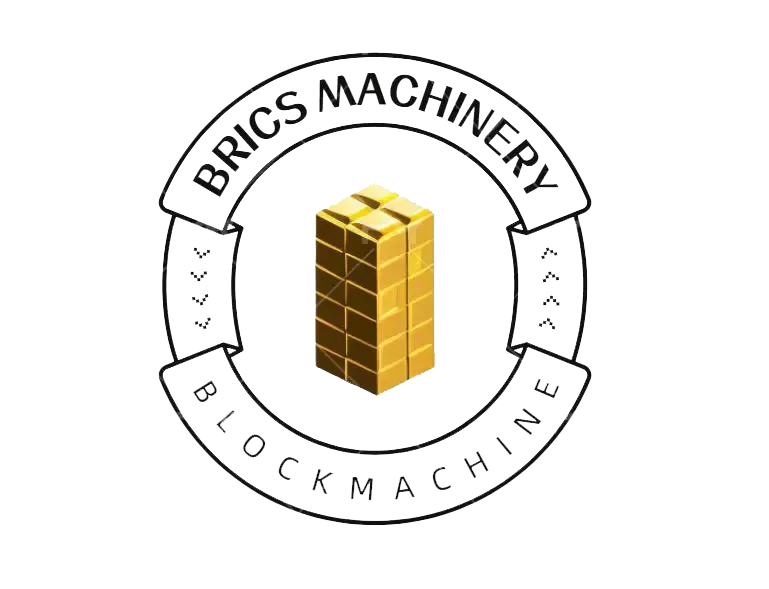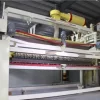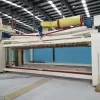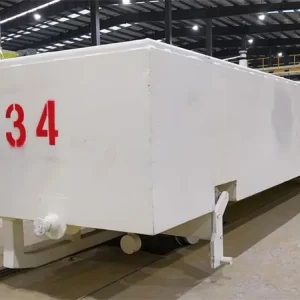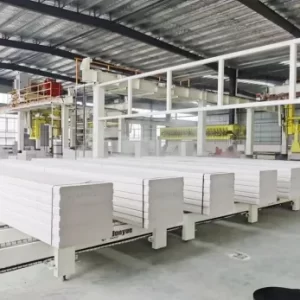CUTTING SYSTEM
Description
The cutting process employs a three-station distributed cutting approach, with each station providing robust support for product quality assurance.
For side cutting of the cakes, an integrated fixed outer frame is utilized in conjunction with a profile cutting machine. A vertical scraper, operating according to a preset program, advances and retracts at various positions, enabling versatile cutting of both blocks and panels. Additionally, the horizontal cutting machine is capable of cutting ultra-thin panels as slim as 50mm.
The process prioritizes dimensional accuracy and surface quality, starting with a coarse-to-fine approach. Initially, a crushing knife is employed to break the bread head, reducing the cut waste into smaller pieces. This aids in ensuring that waste is efficiently directed to the slurry pit in the trench.
Following the initial rough cut, a diagonal-stretched steel wire is used for a second rough cut. During this phase, the cutting pattern is distributed and layered, and multiple steel wires are employed to cut in successive layers.
1.After the rough cutting stages, three straight scrapers are employed for the gradual fine cutting of the blanks. Simultaneously, two straight scrapers can advance forward to enable a mixed cutting process for both plates and blocks, ensuring their respective sizes are maintained.
2.The cutting actions involve straight forward and straight retreat motions, reducing the size of the transition section, resulting in a smoother and more precise cutting process.
The vertical cutting machine employs a cake frame lifting pendulum cutting approach, with gear and rack synchronization for lifting to prevent gap misalignment and enhance cutting precision. The swing cutting unit is fixed to minimize damage to the cakes and utilizes a frame pendulum structure to reduce the likelihood of wire drift during cutting, thereby reducing wire breakage.

